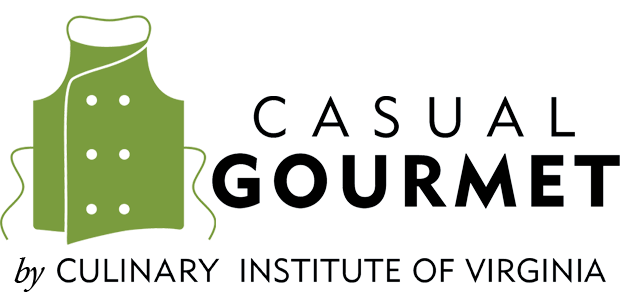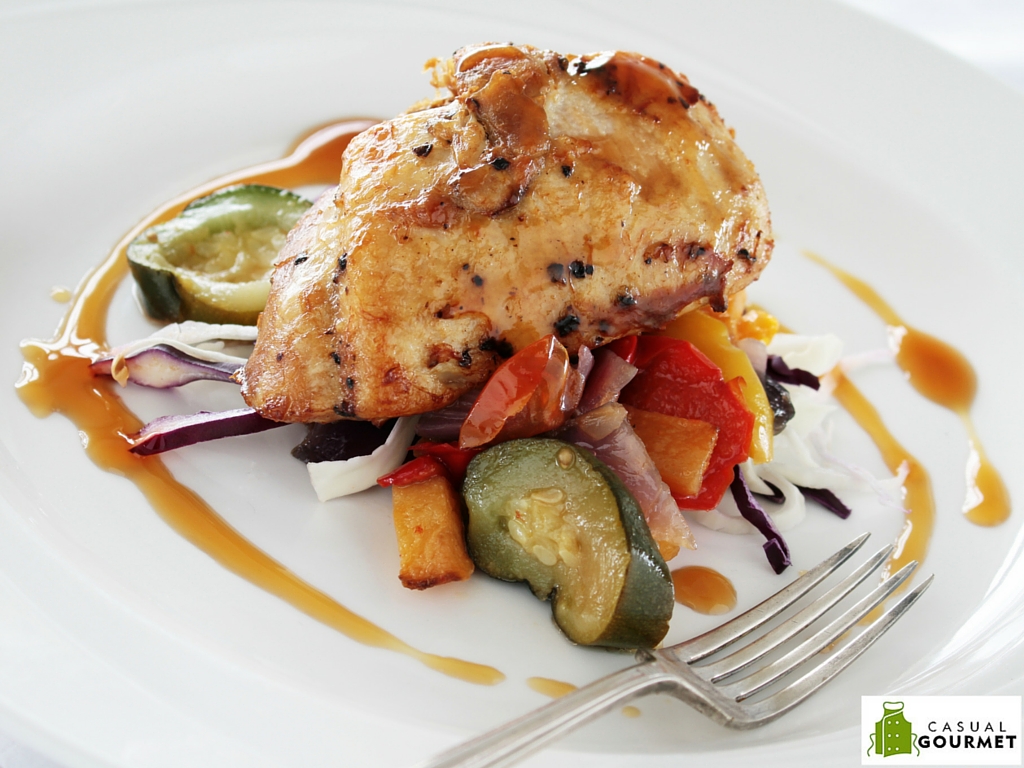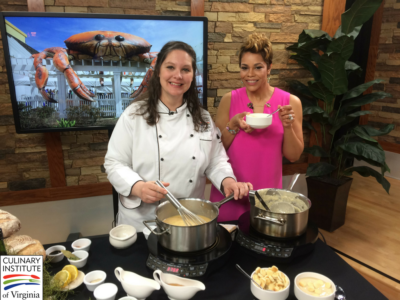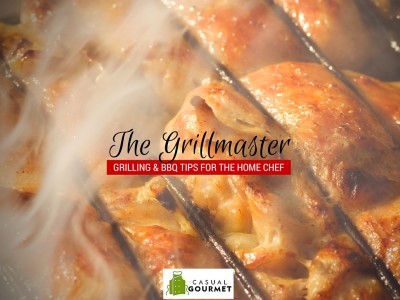6 Plating & Presentation Tips to Make You Look like a Gourmet Chef
Gourmet chefs seem to be able to put together these stunning meals, where every ingredient is carefully placed in what looks like a 3-D food painting. While chefs do undergo training that includes presentation, you can get a similar look for your own at-home meals with a few quick tips. If you’re interested in learning to cook and mastering the fundamentals of incredible plating, try out these strategies and see if they whet your appetite!
Plate the Idea First
Take a look at the components of your meal — the protein, the carbs, any vegetables and fruit, and sauces or garnishes. Within the confines of the plate you plan to use, figure out a general outline for the food. Do you want long items to cross or be perpendicular to one another? Are you particularly fond of placing items on a diagonal? Or are you plating a small dessert and have a lot of white plate space to play with, where you can create your own patterns? Try to sketch it out first because once you start placing the food on the plate, you’re not going to be able to keep moving it to clean plates if you decide you don’t like something in the pattern.

Plating works best with a strong anchor.
Start With an Anchor
Unless the centerpiece of your plate is going to be a large piece of juicy meat that can stick to the plate on its own, have an anchor. This is a pile of sauce or soft food like cooked grains that will help hold the rest of the food in place. Use polenta, Arborio rice, or another similarly soft grain.
Drain Sauces
If any of the ingredients have been cooked in sauce, let them drain a bit. Put them on a rack or in a strainer if needed. If the ingredients are dripping with sauce, the sauce could drip onto the plate in the wrong spots. That’s not so bad if the sauce drips onto an empty space, but if it drips onto another food — or worse, the anchor food — you’re not going to be able to clean it off so easily.
Add the Main Course
Whether the spotlight of the dish is meat, ice cream, or a pile of carrots, add the main part of the dish after placing the anchor food. You may want to slice up the main food and press the slices into the anchor, or you can place the main food just to the side of the anchor food so that it is in the anchor food but not taking up the entire space. Try to ensure the food won’t roll around on the plate if you tilt the plate a little. Do not test it by tilting it a lot, though, because the foods will fall off, and the anchor food will slide right out of place!
If you drained any sauce from the main food before and want to include it in the final dish, you can add it now, creating a pattern that will frame the food on top of it. You can also wait until the entire dish is done so that you can have sauce running over all of the pieces.

Never underestimate the power of plating even the simplest items.

Don’t be afraid to play around a bit with color!
Use a Color Wheel
… Or some sort of color palette. Find colors that clash and try to keep those foods from touching. They can certainly be on the same plate, but you want the colors to flow and not make you or your dinner guests raise an eyebrow. Orange slices and blueberries together could be a bit jarring, but orange slices, candied lemon peel, strawberries, and then blueberries might be easier on the eyes.
Clean Up
If you drip some sauce accidentally, wipe it up. If some oil from cooked vegetables splatters over the side of the plate, wipe the rim of the plate. There’s been a trend in food blogs to have globs and glorps of food overrunning the rims of bowls and sundae cups; this is not something you should aspire to have. Professional plating and presentation have sauces and dabs and dots of foods, certainly, but they are planned out and are a definite part of the entire pattern. Letting food slip over the edge of the plate simply looks messy.
Great lesson last night! Food for ThoughtPrinciples of cooking with Heat with Chef Douglas Cooperman
Posted by Princess Lipscomb on Wednesday, September 16, 2015
Do You Want to Learn to Cook?
If you find you are interested in learning more about plating, presentation, and cooking in general, consider taking cooking classes at Casual Gourmet. There, you get hands-on experience actually preparing and cooking food, from allergy-friendly recipes to regional specialties. If you want to learn to cook, give us a call today, and we’ll be happy to help you find the best classes for you!
DISCLAIMER – Casual Gourmet makes no claim, warranty or guarantee as to actual outcomes for past or current attendees. The Casual Gourmet website is published for informational purposes only. Every effort is made to ensure the accuracy of information contained on the CasualGourmet.com domain; however, no warranty of accuracy is made. No contractual rights, either expressed or implied, are created by its content.




